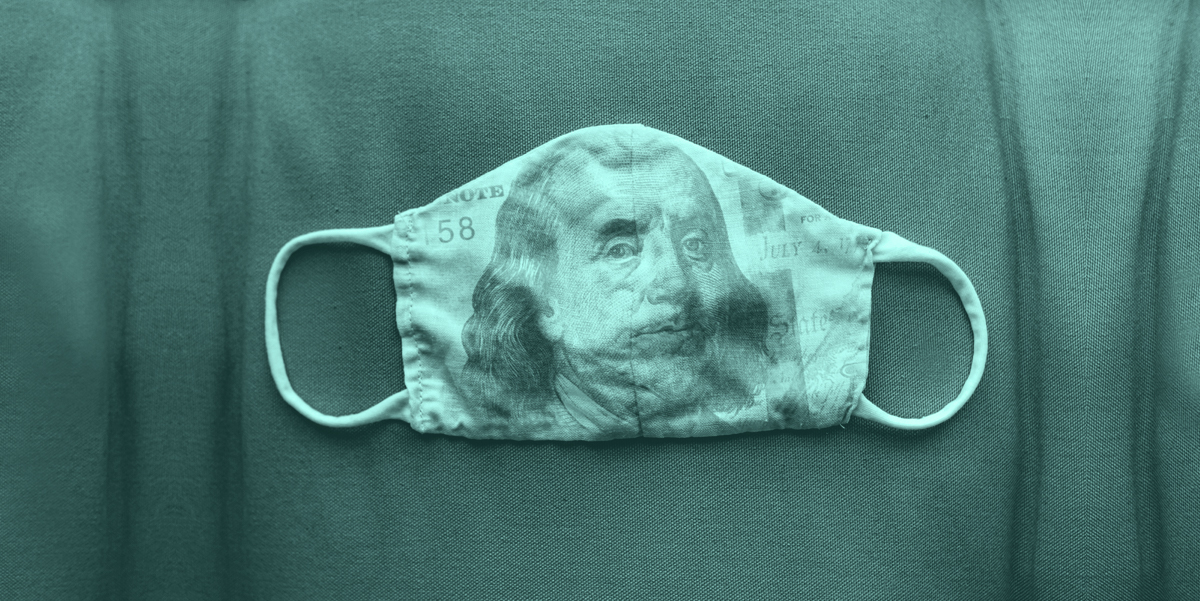The Consolidated Appropriations Act, 2021, H.R. 133 included funding for the government, extensions for expiring tax extenders, COVID tax relief under the COVID-related Tax Relief Act of 2020, and many more items. Passed by both the House and Senate, it was signed into law by President Trump on December 27, 2020.
Let’s take a look at a few of the highlights related to pandemic taxpayer relief:
Individuals
Economic impact payments. $600 per taxpayer ($1,200 for married taxpayers filing jointly) and an additional $600 per qualifying child (under age 17). The recovery rebate payment begins to phase out starting at $75,000 of modified adjusted gross income for single filers, $112,500 for heads of household, and $150,000 for married taxpayers filing jointly. These payments are similar to the ones many taxpayers received earlier this year under the CARES Act.
Unemployment benefits. Additional unemployment insurance in the amount of $300 has been extended for an 11-week period beginning from December 26, 2020.
Educator expenses. Clarification that Personal Protective Equipment (PPE) used for the prevention and spread of COVID-19 will be treated as a deductible expense, retroactive to March 12, 2020.
Charitable contributions – Nonitemizers. The $300 above-the-line deduction for cash contributions given to a qualified charitable organization is extended through 2021 and increases to $600 for married taxpayers filing joint returns. In 2020, the maximum amount was $300.
Charitable contributions – Itemizers. The increased contribution limit to qualified charities that was specified in the CARES Act is extended through 2021 and applies to individuals and corporations. Amounts of up to 100 percent of adjusted gross income (AGI) are allowed as deductions (same as 2020). In 2019, the limit for the deduction for cash contributions was 60% of AGI.
Earned Income. For the 2020 tax year, taxpayers may use earned income amounts from the immediately preceding tax year when figuring the Earned Income Tax Credit and the Additional Child Tax Credit.
Flexible spending arrangements. Taxpayers can rollover unused amounts from 2020 to 2021 and from 2021 to 2022 and employers may allow employees to make a contribution change mid-year in 2021.
Money purchase pension plans. The COVID-related Tax Relief Act of 2020 also allows money purchase pension plans to be included as a qualified retirement plan, retroactive to the CARES Act. The CARES Act allowed taxpayers to make penalty-free withdrawals of up to $100,000 from certain retirement plans for coronavirus-related expenses, with the option to pay tax on that income over a three-year period or recontribute withdrawn funds.
Businesses
Paycheck Protection Program (PPP) Loans. Retroactive to the effective date of the CARES Act, PPP loans that are forgiven will be treated as tax-exempt income. Gross income does not include loan forgiveness for Economic Injury Recovery Loans (EIDLs) and certain other loans or loan repayment assistance. Under the CARES Act, taxpayers receiving an EIDL were required to reduce any PPP loan forgiveness by the amount of the EIDL.
In addition, businesses with 300 or fewer employees with a gross revenue loss of 25 percent in any quarter of 2020 compared to the same quarter in 2019 are eligible for a second round of PPP loans.
Deductible expenses. Deductions are also allowed for deductible expenses (that would otherwise be deductible) paid for with the proceeds of a forgiven PPP loan. This reverses earlier IRS guidance that stated no deduction would be allowed. This tax provision applies to the second round of PPP loans as well.
Payroll tax credits. Refundable payroll tax credits for paid sick and family (Families First Coronavirus Response Act) leave are extended through March 2021. Employers are not required to provide paid leave after December 31, 2020; however, employers may still claim the credit if the employee would have qualified for paid leave if the mandate had been extended beyond December 31, 2020, and the employer provides paid leave.
Employee retention tax credits. Implemented as a refundable credit under the CARES Act, the employee retention tax credit (ERTC) is extended through June 30, 2021. The following also applies for calendar quarters beginning after December 31, 2020:
- The credit rate is increased from 50 to 70 percent of qualified wages.
- The limit on per-employee creditable wages is increased from $10,000 for the year to $10,000 for each quarter.
- The required reduction in a year-over-year decline in gross receipts on a quarterly basis is reduced from 50 to 20 percent.
- When determining the relevant wage base, the definition of a “large employer” that can only claim the credit for employees that are not working because of the COVID pandemic increases from more than 100 to more than 500 employees.
- Certain government employers are now allowed to claim the ERTC.
- Safe harbor allowing employers to use prior-quarter gross receipts to figure eligibility.
- New employers in 2020 (i.e., those not in existence in 2019) can claim the credit.
Furthermore and retroactive to the date of the CARES Act, the ERTC is expanded to allow employers who receive PPP loans to qualify for the credit with respect to wages that are not paid with forgiven PPP proceeds. It also clarifies that group health plan expenses can be considered qualified wages even if no other wages are paid to an employee.
Employee portion of payroll tax deferral. The repayment period for deferral of payroll tax is extended through December 31, 2021.
Please contact us with questions regarding COVID related business.

